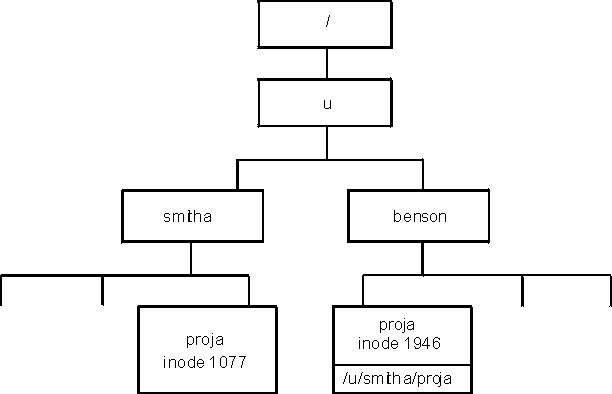 z/OS UNIX System Services User's Guide
z/OS UNIX System Services User's Guide
 z/OS UNIX System Services User's Guide
z/OS UNIX System Services User's Guide
|
Previous topic |
Next topic |
Contents |
Contact z/OS |
Library |
PDF
Creating a symbolic link z/OS UNIX System Services User's Guide SA23-2279-00 |
|
|
You can create a symbolic link to a file or a directory. Additionally, you can create a symbolic link across mounted file systems, which you cannot do with a hard link. A symbolic link is another file that contains the path name for the original file—in essence, a reference to the file. A symbolic link can refer to a path name for a file that does not exist. To create a symbolic link to a file, use this command format:
Figure 1. Symbolic link: a new
file. A symbolic link has its own inode number.
 When you create a symbolic link, you create a new physical file with its own inode number, as shown in Figure 1. Because a symbolic link refers to a file by its path name rather than by its inode number, a symbolic link can refer to files in other mounted file systems. To understand how a symbolic link that is a component of a path name is handled during path name resolution, see Resolving a symbolic link in a path name. 


|
 Copyright IBM Corporation 1990, 2014 Copyright IBM Corporation 1990, 2014 |